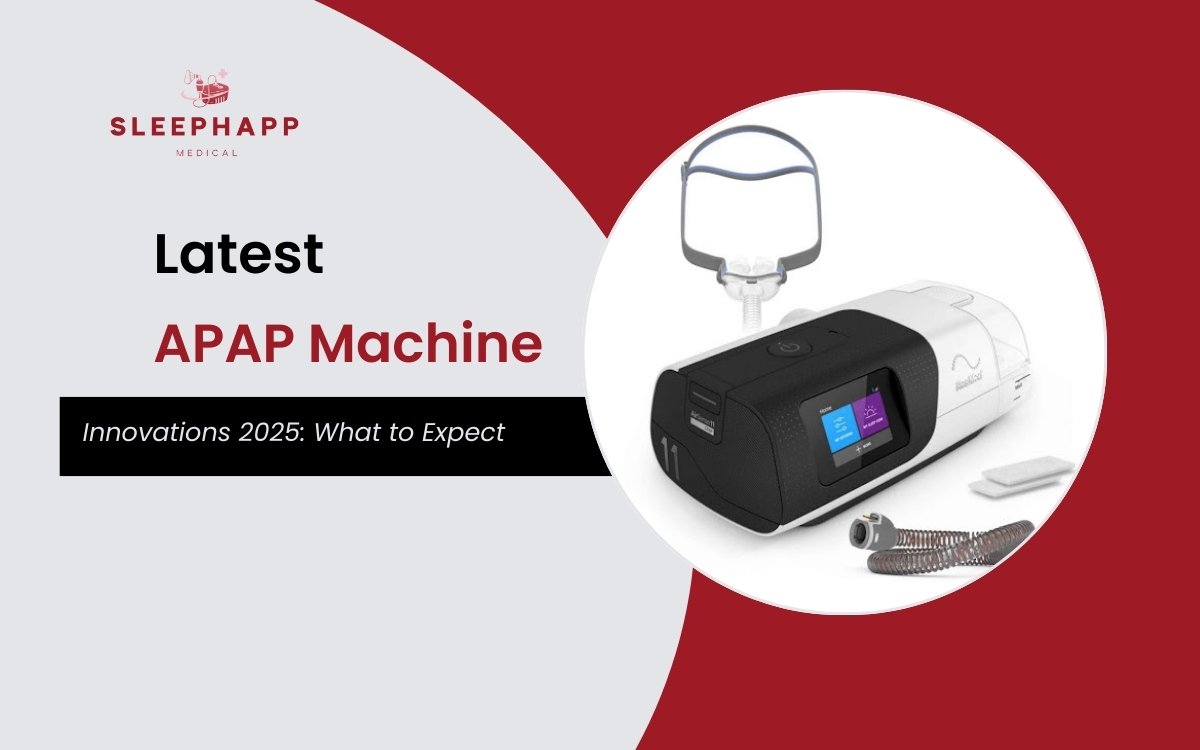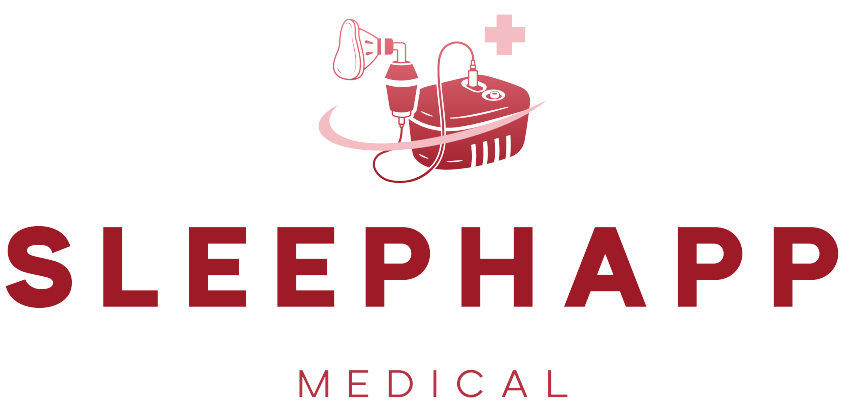The Latest Innovations in APAP Machines for 2025: What to Expect
Home » The Latest Innovations in APAP Machines for 2025: What to Expect

Table of Contents
APAP machines have changed sleep apnea treatment with personalized airflow control. Unlike CPAP, which gives constant pressure, APAP adjusts to breathing needs. This makes it more comfortable and effective.
In 2025, new technology will improve APAP machines. AI, machine learning, and smart features will help. These upgrades will make adjustments more precise and track breathing in real time. They will also be easier to use. Better design and eco-friendly efforts will make APAP devices more portable and available for everyone.
Advanced AI and Machine Learning Algorithms
Predictive Pressure Adjustment
New APAP machines use deep learning to study breathing in real time. They check heart rate and sleep stages to adjust air pressure early. This helps stop breathing problems without waking the user. It makes sleep more comfortable and improves machine use.
Personalized Therapy Profiles
AI tracks user behavior over time. It changes therapy based on the environment, like altitude and humidity. This helps set the best pressure for each person. Machine learning improves settings over time. This makes treatment more personal and effective. To learn more about the future of CPAP therapy and emerging technologies, check out.
Enhanced User Comfort and Design
Mask Innovations
New APAP masks use very soft, skin-friendly materials. They are good for sensitive skin. Different sizes help find the perfect fit. Straps adjust easily with magnets or auto-adjust features. This keeps the mask secure and prevents leaks. These new features reduce irritation and improve sleep.
Noise Reduction Technology
APAP makers use quiet motors that work below 20 dB. They add special systems to reduce vibrations. This stops loud sounds. It helps users and their partners sleep better.
Better Climate Control
The heated tubing now has smart humidity sensors. It keeps moisture levels steady all night. This stops dryness and irritation. Many APAP users have this problem. It also makes therapy work better. (Global Sleep Foundation)
Smart Connectivity and IoT Integration
Mobile App Ecosystem
New APAP machines connect to mobile apps for real-time sleep tracking. These apps use AI to give insights and track sleep data. They also check if users follow their sleep therapy. Users can control the machine with voice commands using Alexa or Google Assistant. This makes using the machine easy and smooth.
Wearable Device Syncing
Wearable devices can connect to smartwatches and fitness trackers. This helps track health in a better way. It includes SpO2 levels and sleep cycles. These details help improve therapy. Users get a full view of their sleep health.
Telemedicine Compatibility
Doctors can check APAP settings from far away using the cloud. They can give quick feedback. This helps patients follow treatment better. Doctors can also change settings in real time.
Portability and Sustainability
Compact, Travel-Friendly Designs
Small APAP machines are easy to carry and light to pack. They fold and fit in bags, making travel simple. Travelers and workers can use them anywhere without stopping therapy.
Battery Innovations
New batteries can charge using sunlight. They last more than 24 hours. Perfect for outdoor lovers and places with weak electricity.
Eco-Conscious Materials
Manufacturers use recyclable plastics and save energy to help the environment. Modular parts make upgrades easy and cut down on electronic waste.
Comprehensive Health Monitoring
Multi-Sensor Integration
New APAP devices have more sensors. They track oxygen levels, breathing rate, and snoring. These features help understand sleep and breathing health better.
Holistic Health Reports
APAP machines track sleep and health data together. They show heart and metabolism trends. This gives a full picture of a person’s health. Doctors use these reports to create better treatment plans. This helps patients stay healthier for a long time.
Regulatory Compliance and Data Security
Adherence to Global Standards
All AI-powered APAP devices follow FDA and CE rules. This ensures safety and effectiveness. These rules help keep the devices reliable and working well.
Enhanced Data Protection
New APAP machines keep user data safe. They use strong encryption and store data in a secure cloud. These protections follow HIPAA rules. This keeps health information safe from hackers.
Market Trends and Accessibility
Cost-Effective Solutions
Subscription plans give software updates and extra features. This makes APAP therapy cheaper. Users get new technology without paying a big price at once.
Insurance Partnerships
More insurance plans now cover new APAP devices. This makes them easier to get. Studies show these devices lower health risks. This helps get insurance approval.
Global Outreach Initiatives
Making APAP therapy available everywhere is important. Manufacturers are creating cheaper models. These models help people in poor areas. This ensures fair access to sleep apnea treatment.
Challenges and Considerations
User Adoption Barriers
New technology is improving, but it can still be hard to use. Complex features make it difficult for users. Simple designs help people understand better. Guided tutorials also make learning easier.
Technical Reliability
Making AI accurate and stopping false pressure changes is important. Testing and improving machine learning makes it more reliable.
Environmental Impact
To reduce e-waste, devices now have modular and upgradable designs. Users can replace parts instead of buying new devices.
Conclusion
The new ideas in 2025 change how we treat sleep apnea. Therapy is now more personal, better, and easier to use. AI helps adjust settings automatically. Smart devices connect easily. Eco-friendly designs make therapy more comfortable. In the future, virtual reality may help people follow therapy. APAP may also help with other long-term diseases.
Sources:
- https://www.sleepfoundation.org/best-cpap-machines
- https://cpapgerate.com/the-future-of-cpap-therapy-top-emerging-technologies-in-2025/
- https://www.businesswire.com/news/home/20200619005229/en/US-Sleep-Apnea-Devices-Market-to-2025—Extensive-Profiles-and-Recent-Developments-of-Market-Players—ResearchAndMarkets.com
